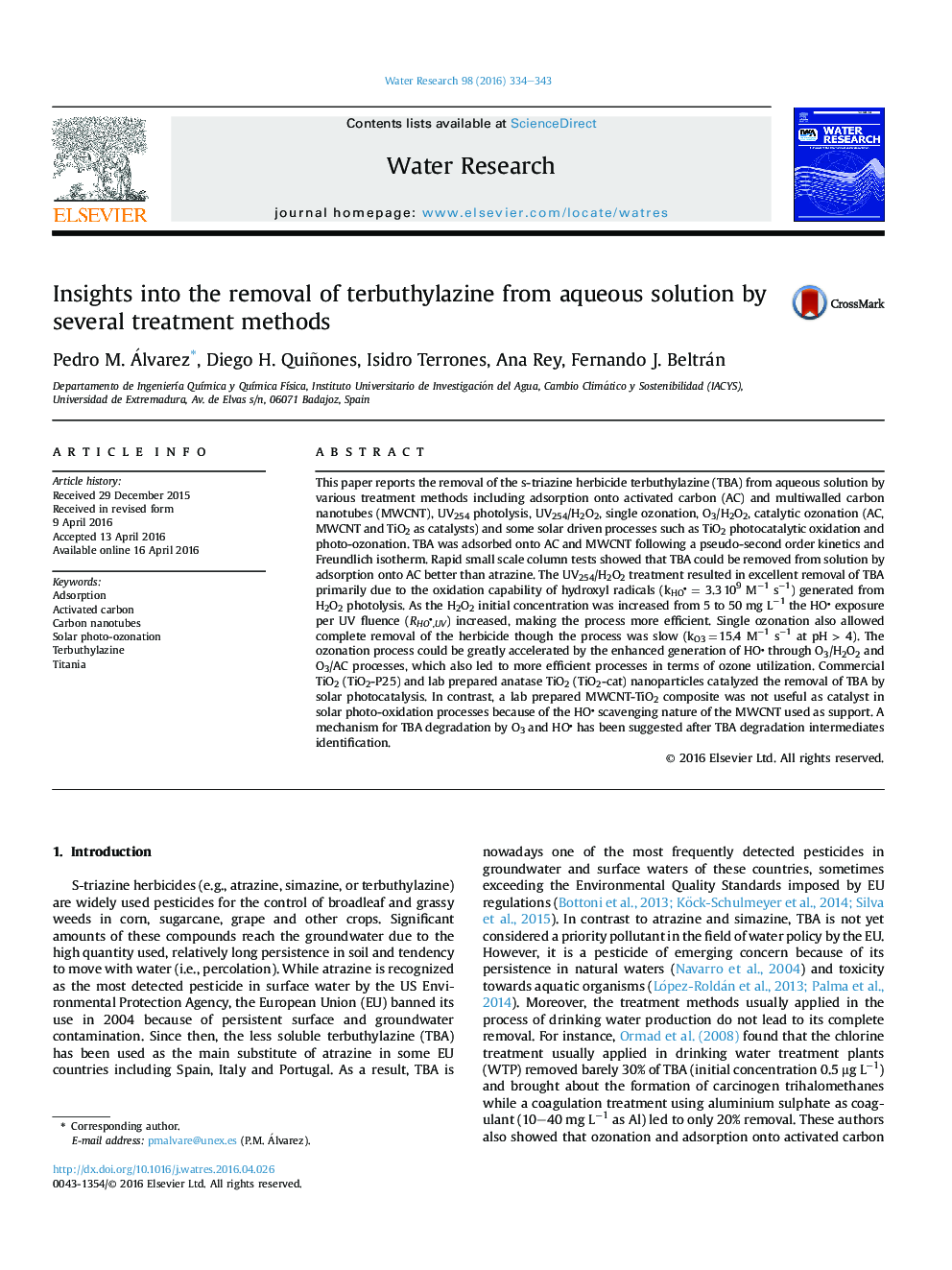| کد مقاله | کد نشریه | سال انتشار | مقاله انگلیسی | نسخه تمام متن |
|---|---|---|---|---|
| 4481000 | 1623070 | 2016 | 10 صفحه PDF | دانلود رایگان |
• Terbuthylazine (TBA) can be easily removed from water by adsorption onto activated carbon and MWCNTs.
• TBA can be removed by UV radiation, the degradation rate and efficiency being greatly increased with the addition of H2O2.
• AOPs such as O3/H2O2, O3/activated carbon, Solar/O3 and Solar/TiO2/O3 remove TBA efficiently.
• Solar driven processes might be an inexpensive alternative to remove TBA from water in areas with high insolation.
This paper reports the removal of the s-triazine herbicide terbuthylazine (TBA) from aqueous solution by various treatment methods including adsorption onto activated carbon (AC) and multiwalled carbon nanotubes (MWCNT), UV254 photolysis, UV254/H2O2, single ozonation, O3/H2O2, catalytic ozonation (AC, MWCNT and TiO2 as catalysts) and some solar driven processes such as TiO2 photocatalytic oxidation and photo-ozonation. TBA was adsorbed onto AC and MWCNT following a pseudo-second order kinetics and Freundlich isotherm. Rapid small scale column tests showed that TBA could be removed from solution by adsorption onto AC better than atrazine. The UV254/H2O2 treatment resulted in excellent removal of TBA primarily due to the oxidation capability of hydroxyl radicals (kHO = 3.3 109 M−1 s−1) generated from H2O2 photolysis. As the H2O2 initial concentration was increased from 5 to 50 mg L−1 the HO exposure per UV fluence (RHO,UV) increased, making the process more efficient. Single ozonation also allowed complete removal of the herbicide though the process was slow (kO3 = 15.4 M−1 s−1 at pH > 4). The ozonation process could be greatly accelerated by the enhanced generation of HO through O3/H2O2 and O3/AC processes, which also led to more efficient processes in terms of ozone utilization. Commercial TiO2 (TiO2-P25) and lab prepared anatase TiO2 (TiO2-cat) nanoparticles catalyzed the removal of TBA by solar photocatalysis. In contrast, a lab prepared MWCNT-TiO2 composite was not useful as catalyst in solar photo-oxidation processes because of the HO scavenging nature of the MWCNT used as support. A mechanism for TBA degradation by O3 and HO has been suggested after TBA degradation intermediates identification.
Figure optionsDownload high-quality image (251 K)Download as PowerPoint slide
Journal: Water Research - Volume 98, 1 July 2016, Pages 334–343
